Smart Circuits Book Design
- Background -
Smart Circuits is an educational STEM based toy that helps teach kids the fundamentals of electronics and circuitry. The product comes with ten proprietary electronic modules, multi-dimensional base-boards, a plethora of connection wires, and a highly illustrated instructional booklet. The booklet explains how to set-up each of the 50 projects included and provides detailed information about what real-life science is actually taking place. It continued SmartLab’s mission of promoting independent learning while teaching kiddos science fundamentals in a fun and exciting way!
Roles:
Art Director
Lead Designer
Project Manager
Teams:
Design
Product Development Manufacturing Partners
Rocky Davies (external illustrator)
Date:
November, 2015
through April, 2016
- Challenge -
Create an interactive and user friendly instructional booklet that fully encapsulates the product use while teaching real-life science. Our three main goals were:
Successfully teach users how to properly use product.
Engage and retain interest in our users. Push for further learning and challenge users to ask questions about how something works.
Create a product that can be shared, participated with, and enjoyed by more than one user.
We always knew we wanted to create an electronic product like this, but it was a huge undertaking. On the product side, identifying exactly what 50 projects we wanted to do was challenging enough. The Product development team also had to manufacturing the microprocessor and additional modules in conjunction to the book being written. But, writing the book and creating the product in tandem was a good way to ensure that the capabilities of the product and included educational information were made in lock-step.
- Questions -
Who is our user?
What projects will drive at the heart of understanding electronics and circuity?
What projects will excite the user and keep them coming back for more?
What do we want our users to gain from the experience?
How user friendly is the instructions?
How valuable is the educational information found in the book?
How user friendly are the components?
Where will our user be using this product?
Where did competitive products fall short?
Why would someone purchase this product?
How long does each project take to create and see results?
- Process -
This project was a beast!
After identifying the 50 projects we wanted to showcase, we began researching how much educational background information on electrical circuitry we needed to provide. As you can imagine, appropriately finding that amount of information and communicating it to an 8-12 year old while keeping them interested required much play testing.
Through our investigations, we discovered that creating a checklist was the most user friendly way to follow-along. The user could simply use a pencil to track where they were in the process. Connecting wires and maintaining your place within the steps was the most challenging hurdle.
- Playtesting -
Initially, we conducted rigorous playtesting with internal team member families. Every project step was analyzed and corrected. After feeling confident, we opened-up the playtests to the public. It was only then that we discovered other systematical errors with the booklet. We hyper-focused on ensuring that the projects were clear, but, forgot to make sure that the educational aspect of the booklet supported the content. We realized that users couldn’t actually see what was taking place inside the modules. For example, “how LED lights work?” How do on/off switches work? So, equipped with those findings, we re-worked the booklet to suit.
Book illustrations
The illustrator, Rocky Davies, was absolutely on-point with his illustration and use of color. His work created an engaging and humorous way of internalizing the information. As the Art Director, I guided the overall look, feel, and visual content. We spent many hours reviewing where illustrations were needed most , how to best show them, and confirming if the illustration was on par with the described scientific information.
- Conclusion -
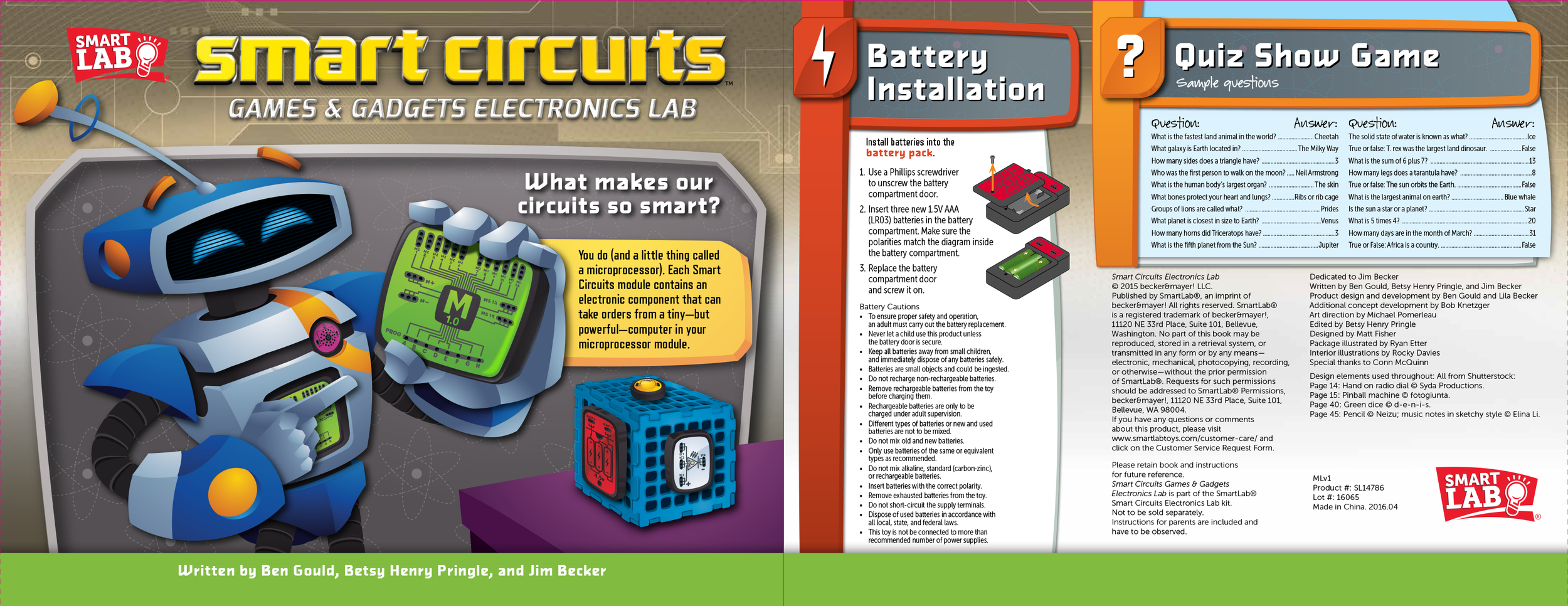
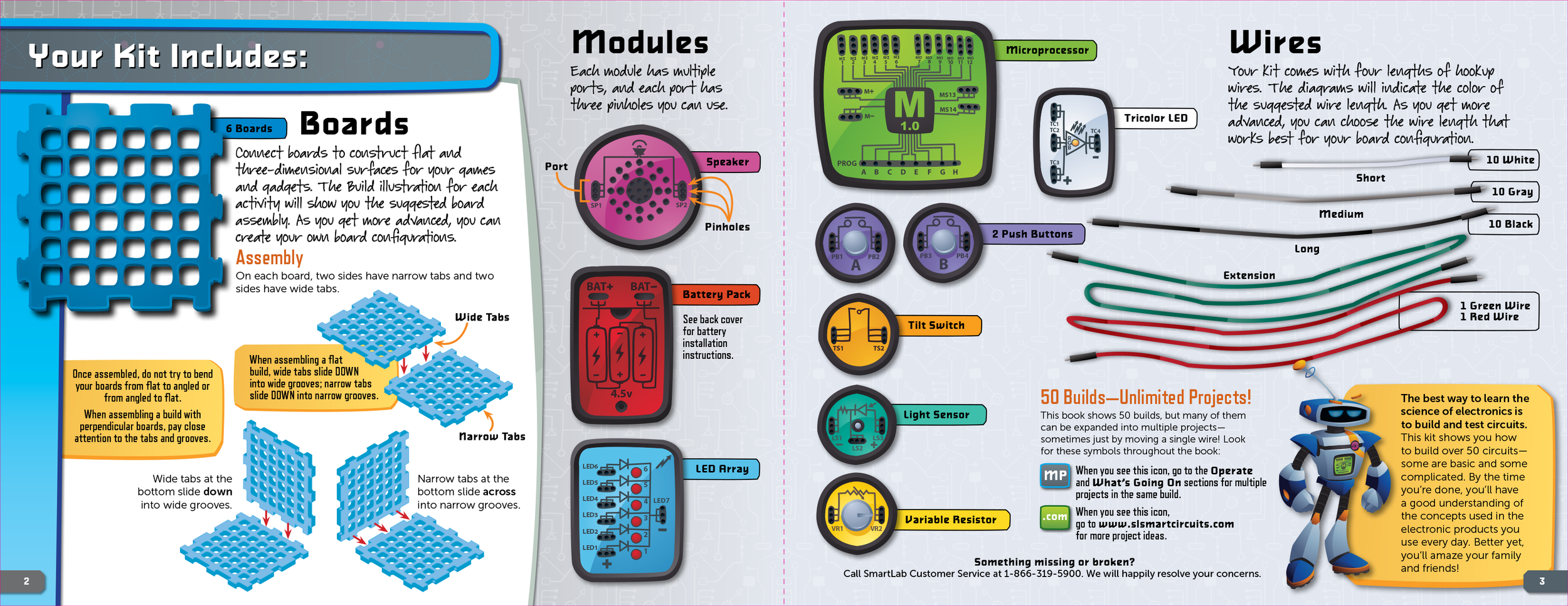

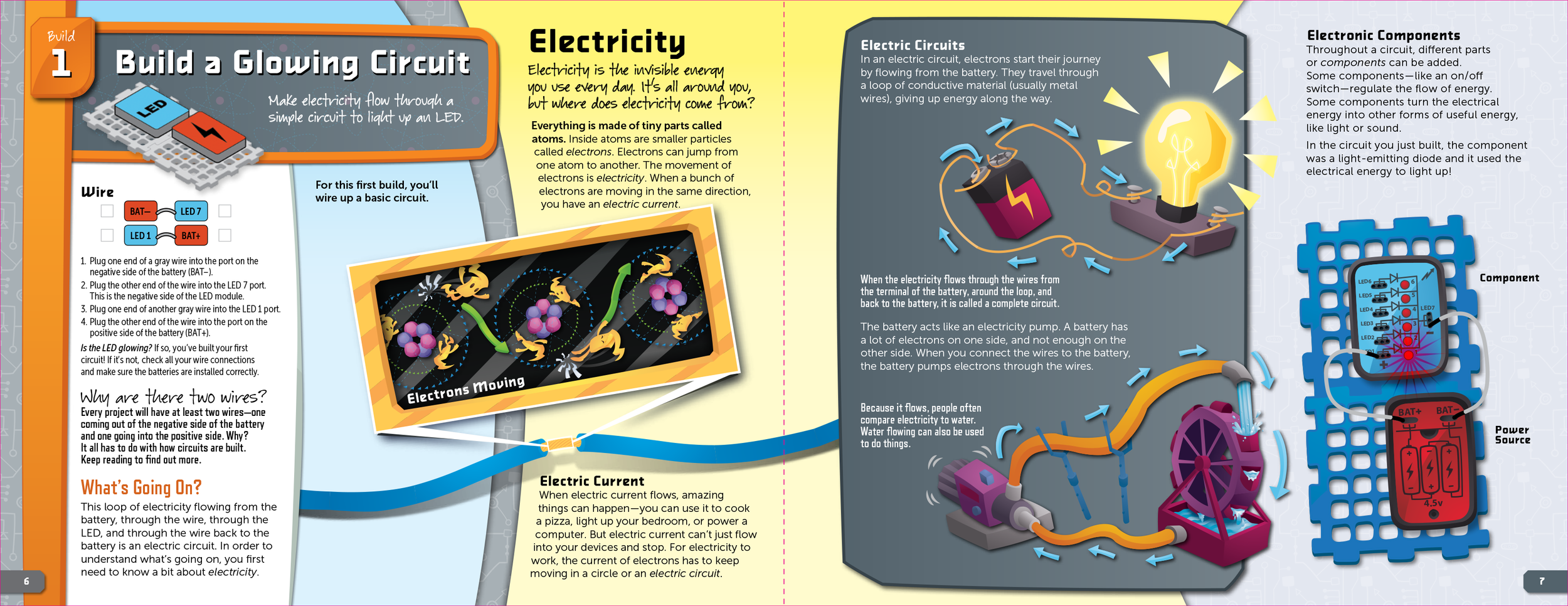
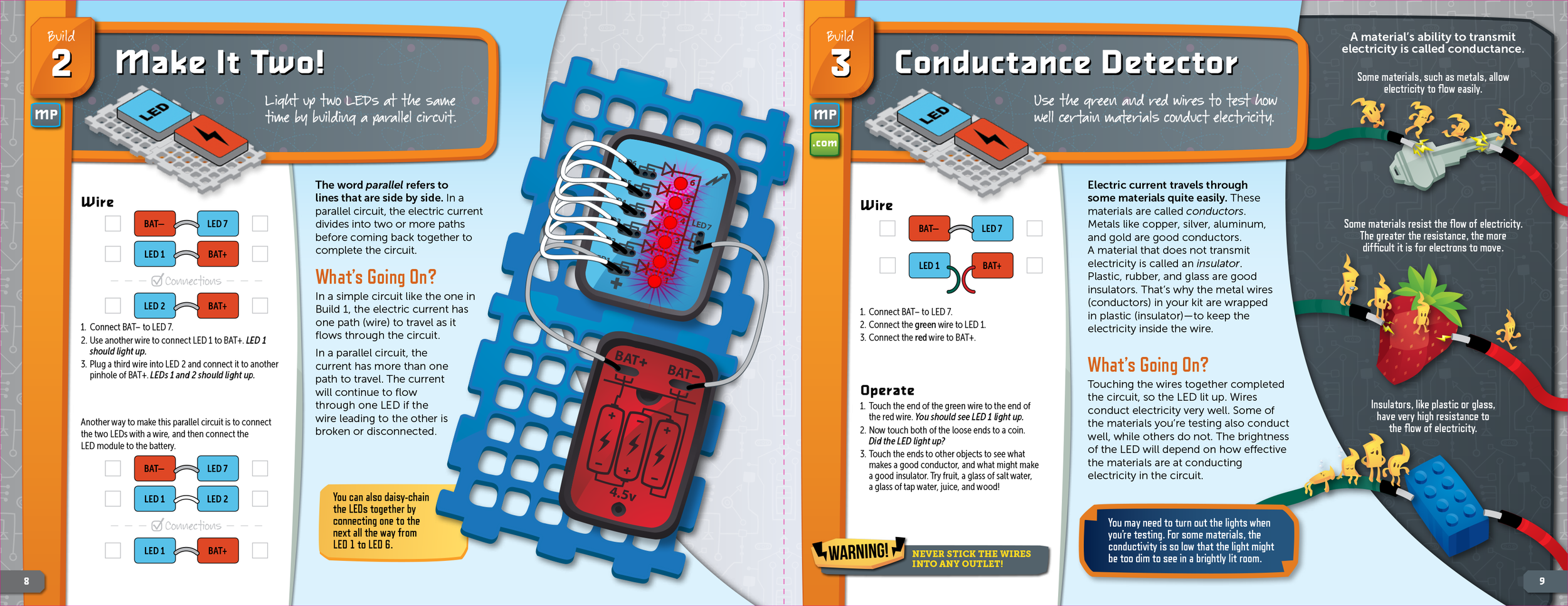
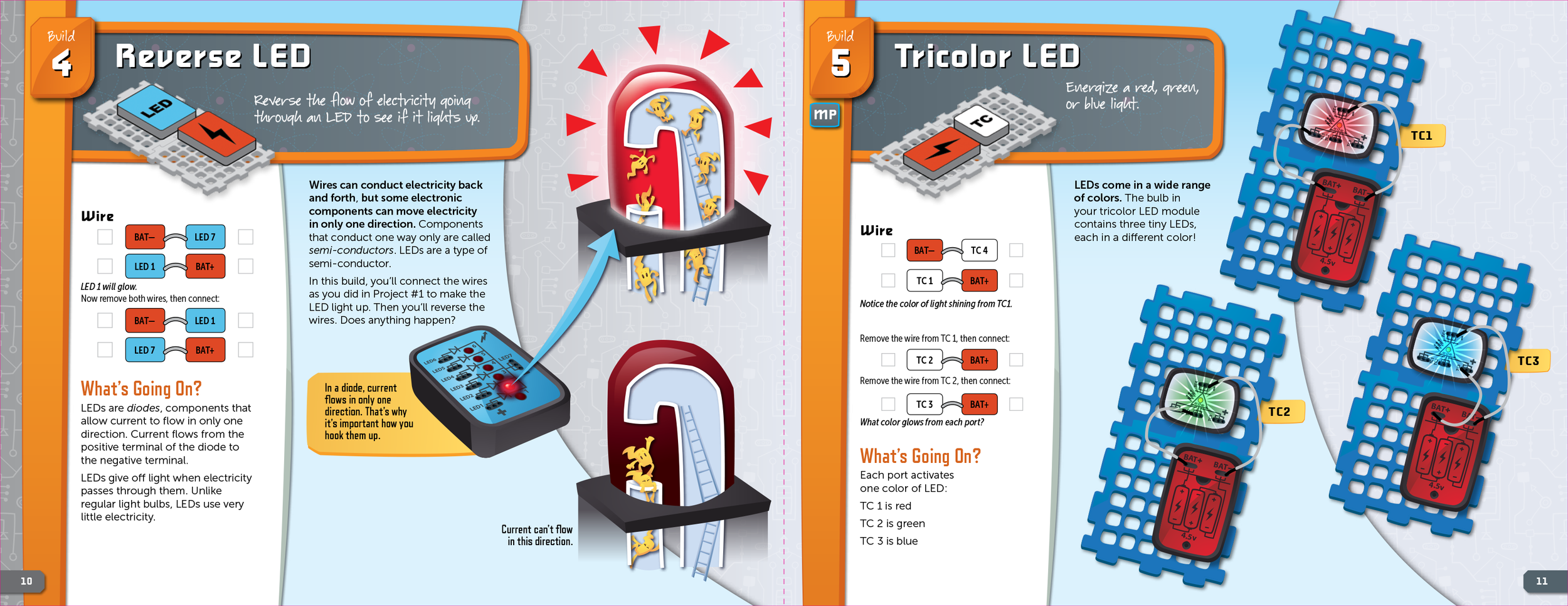
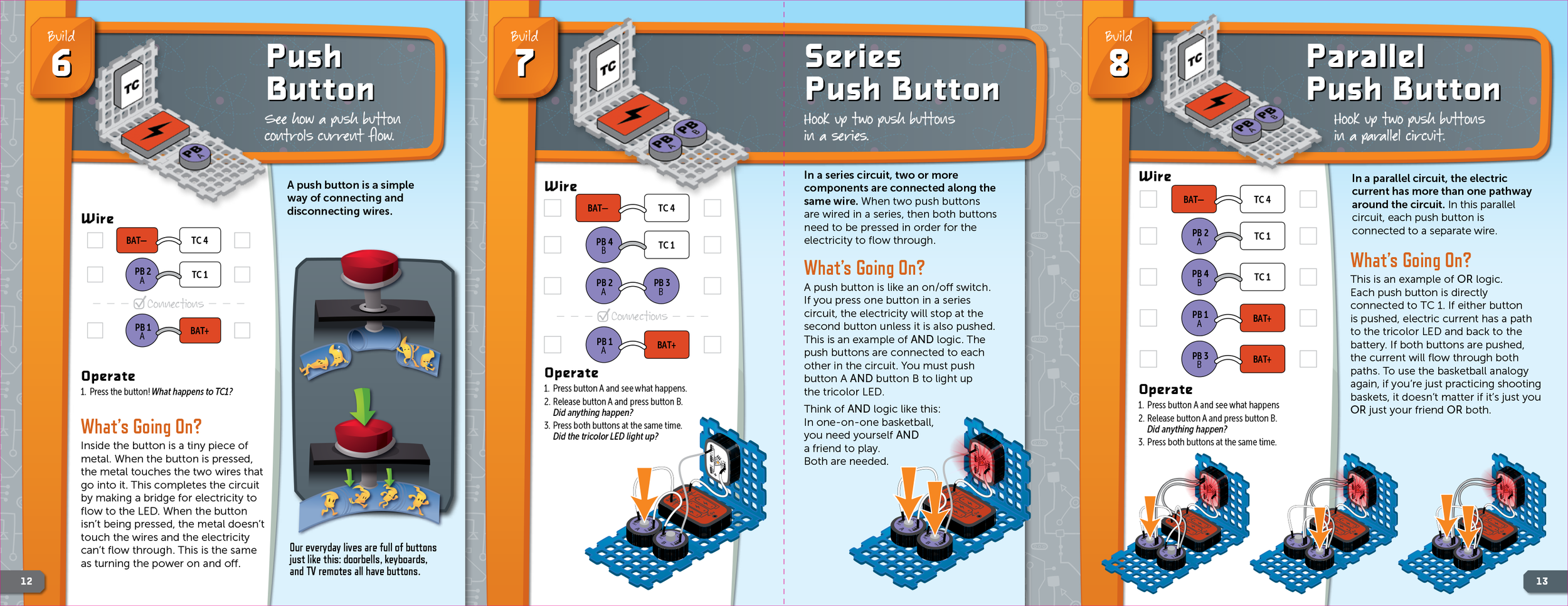

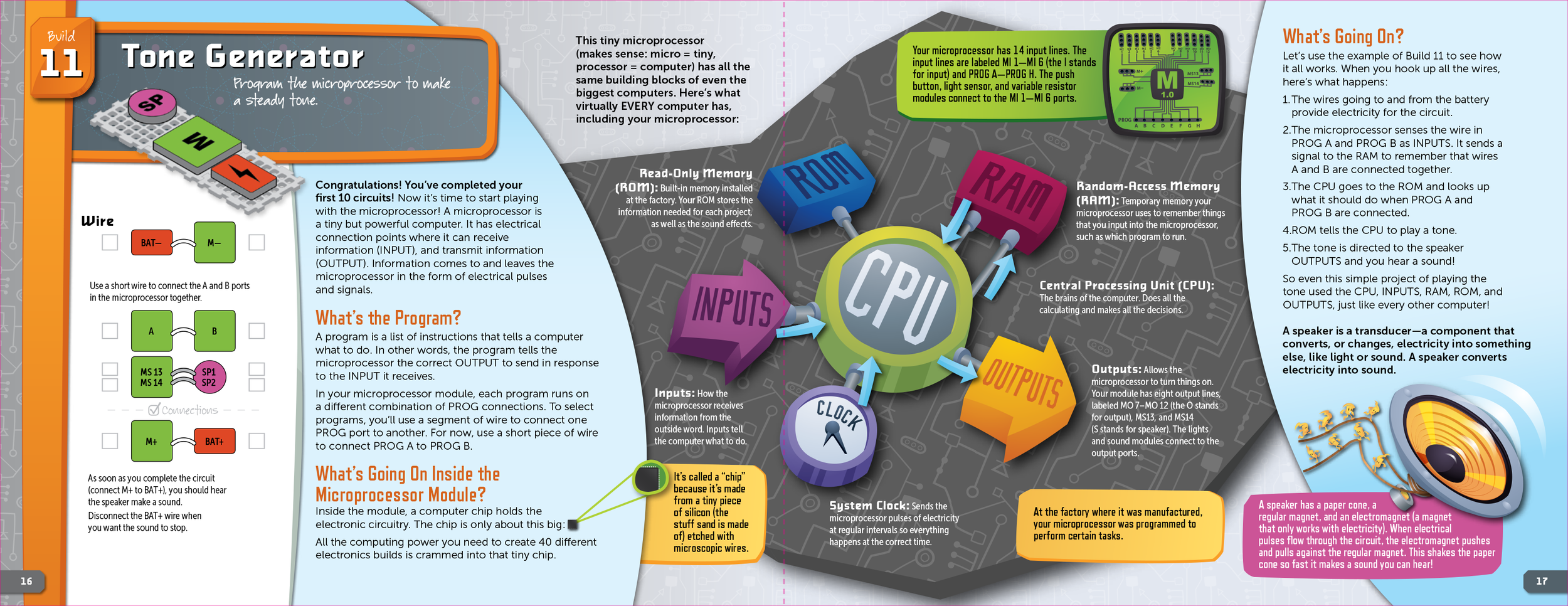
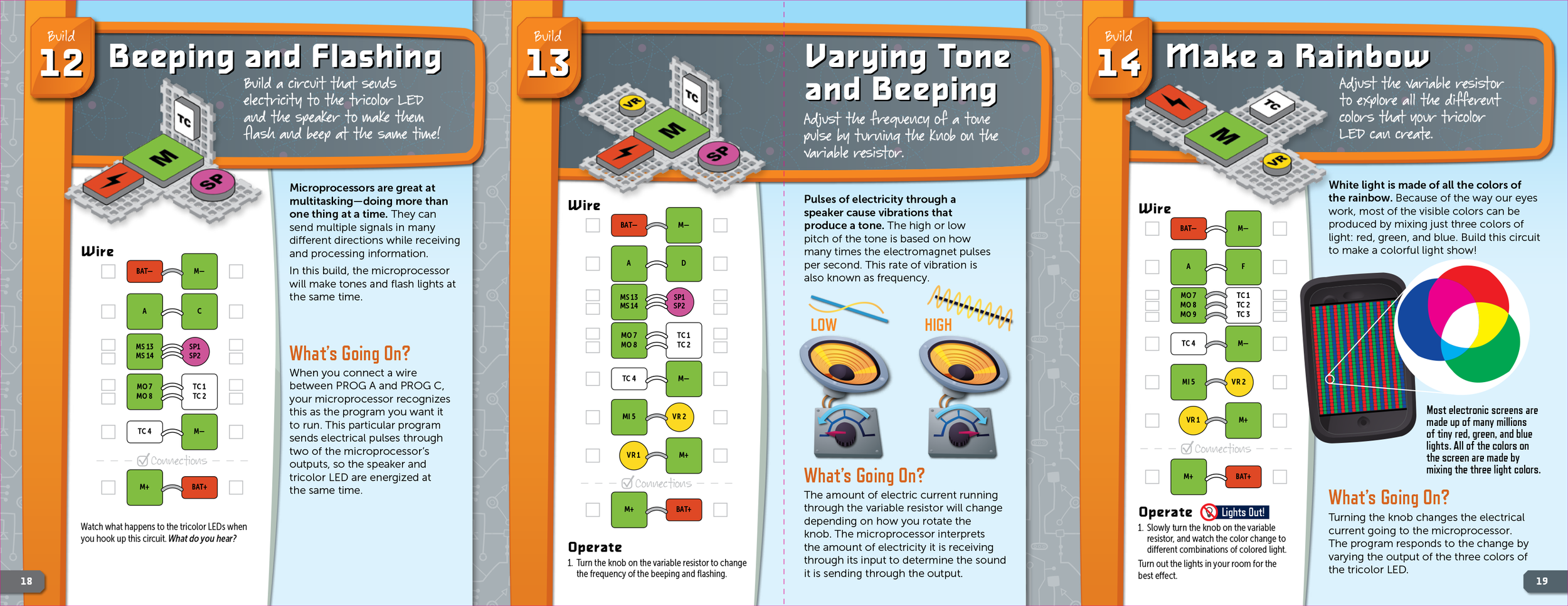
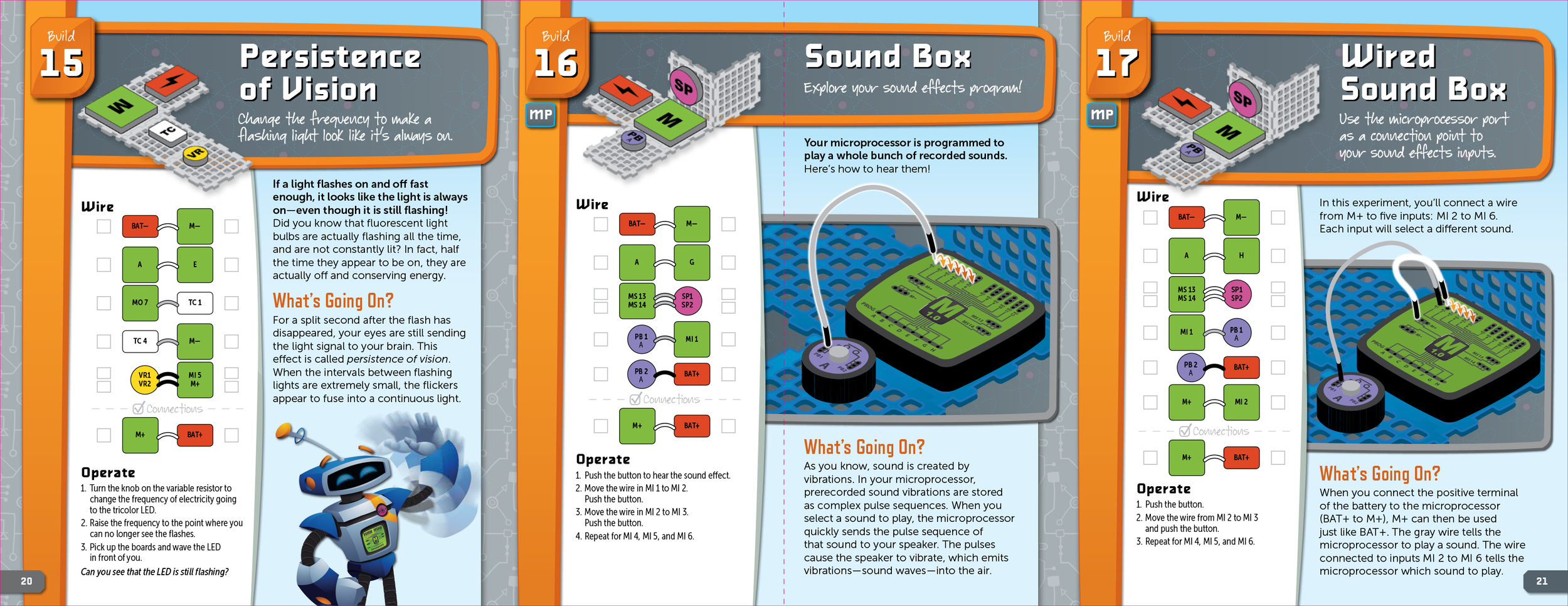
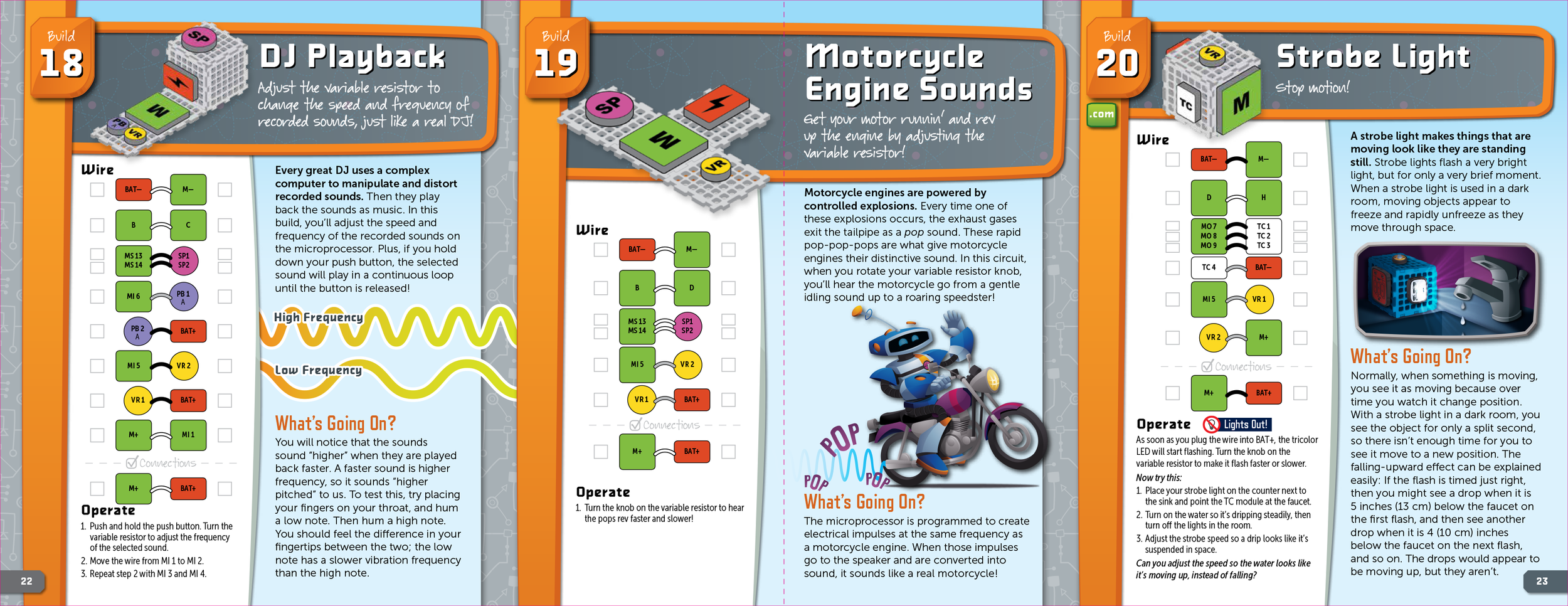
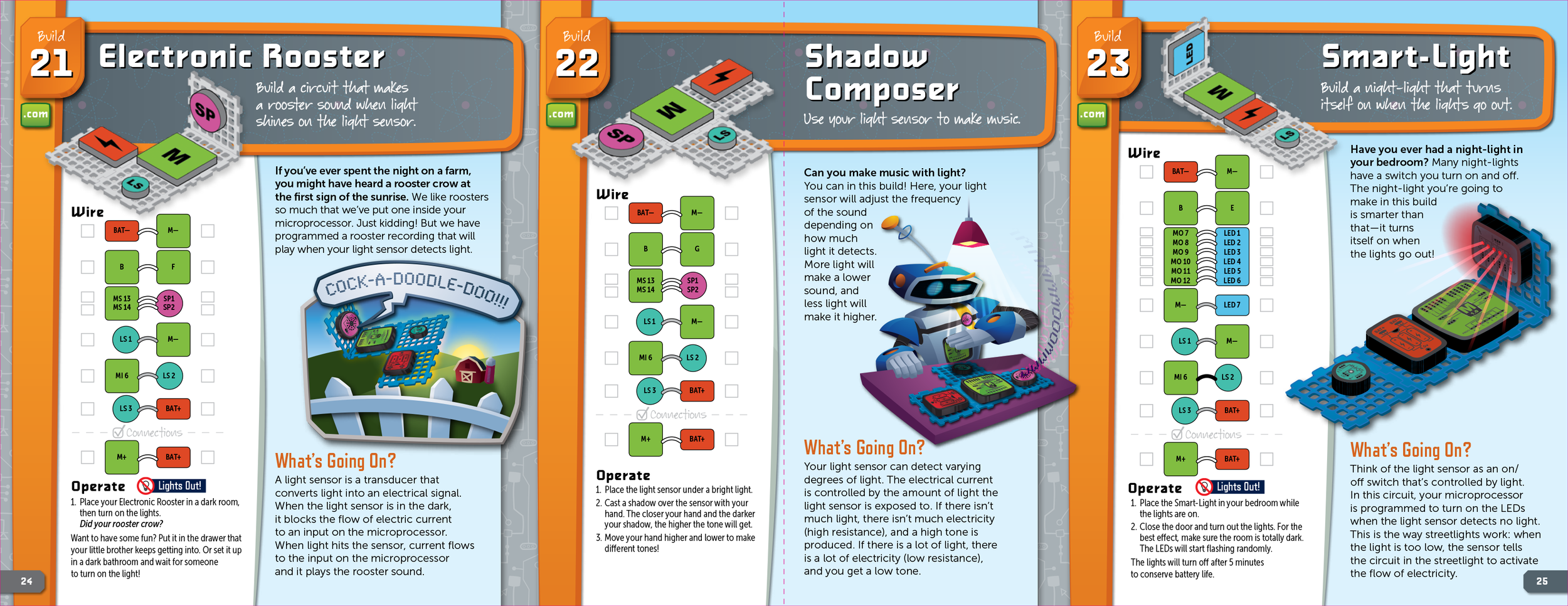
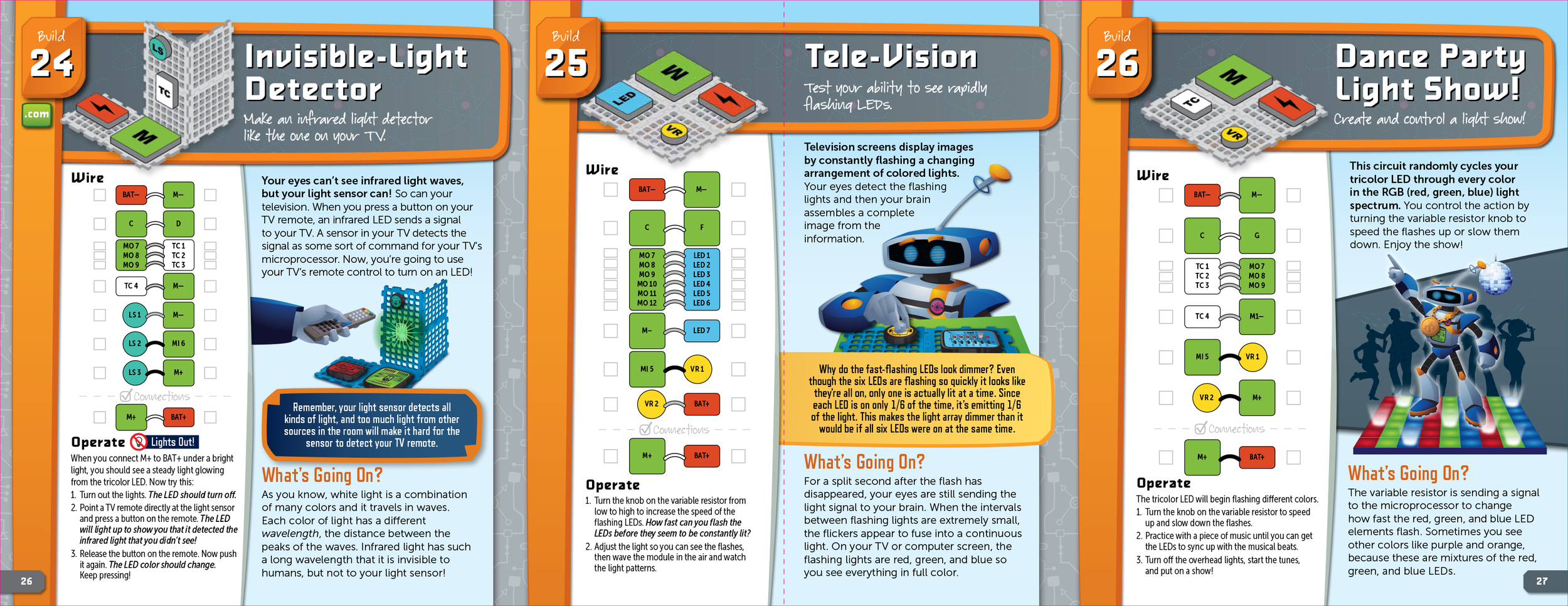
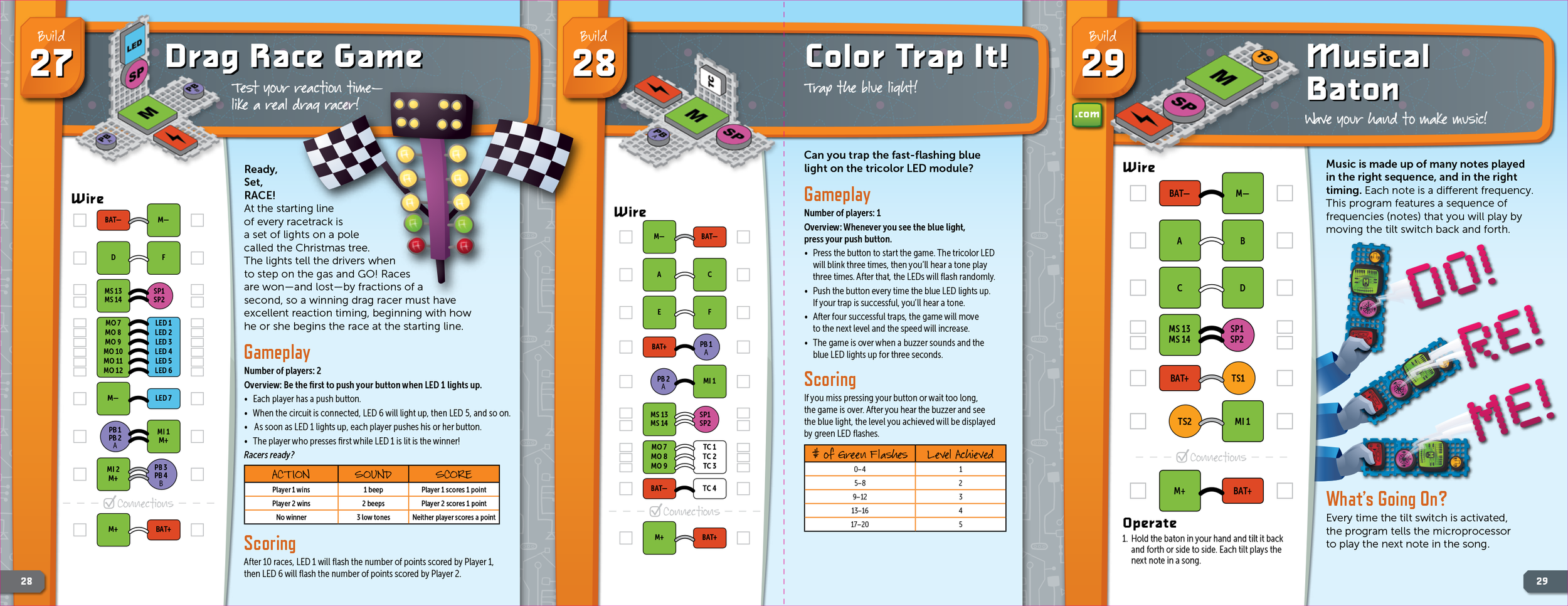
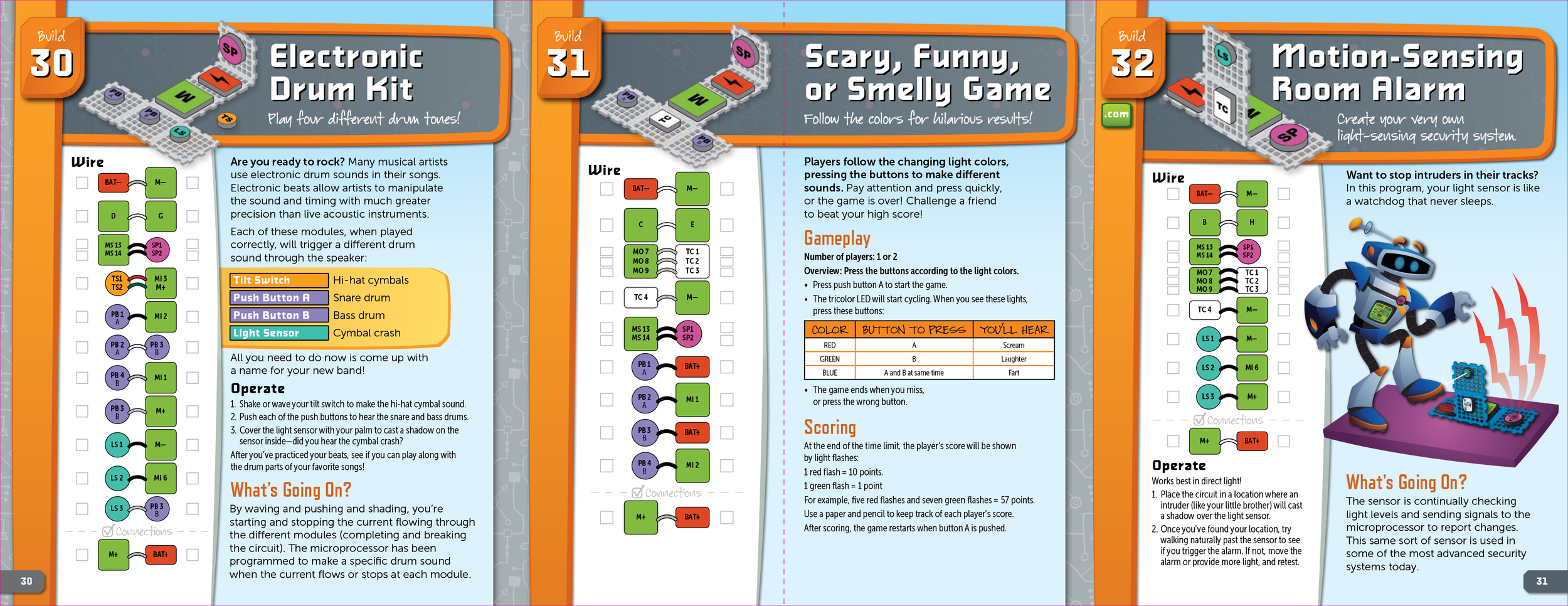
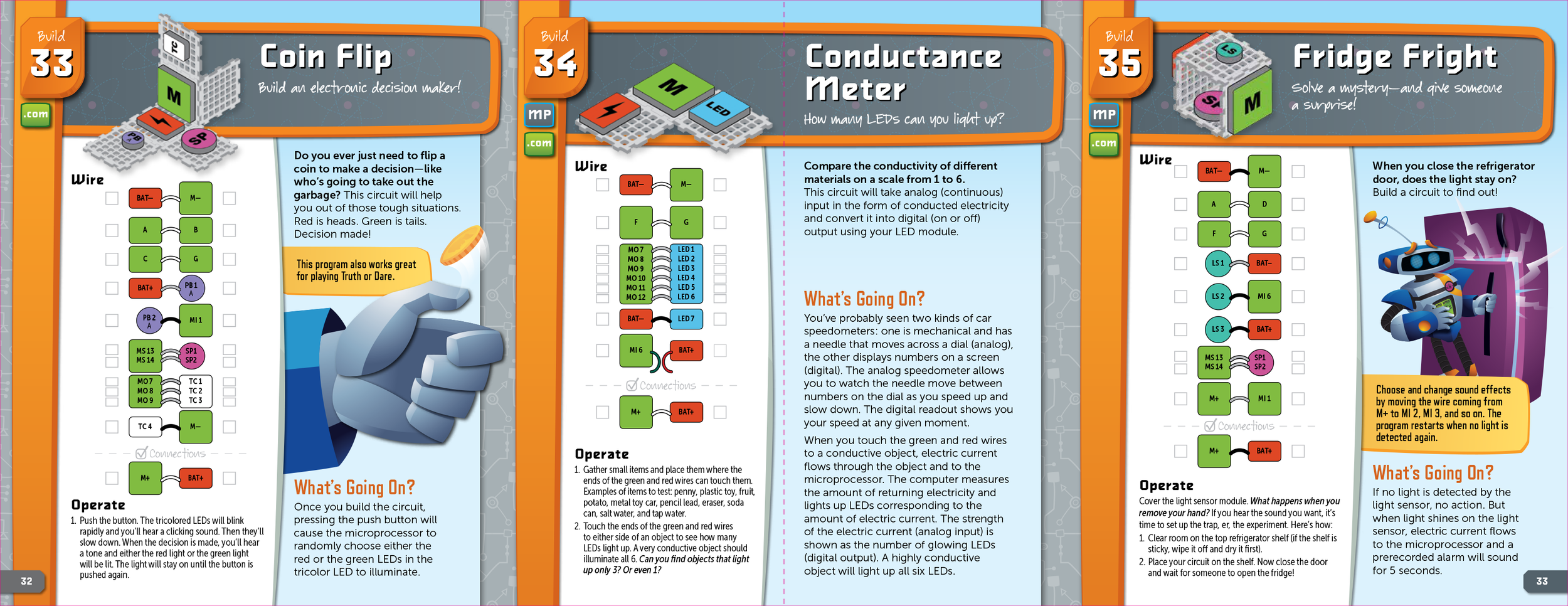
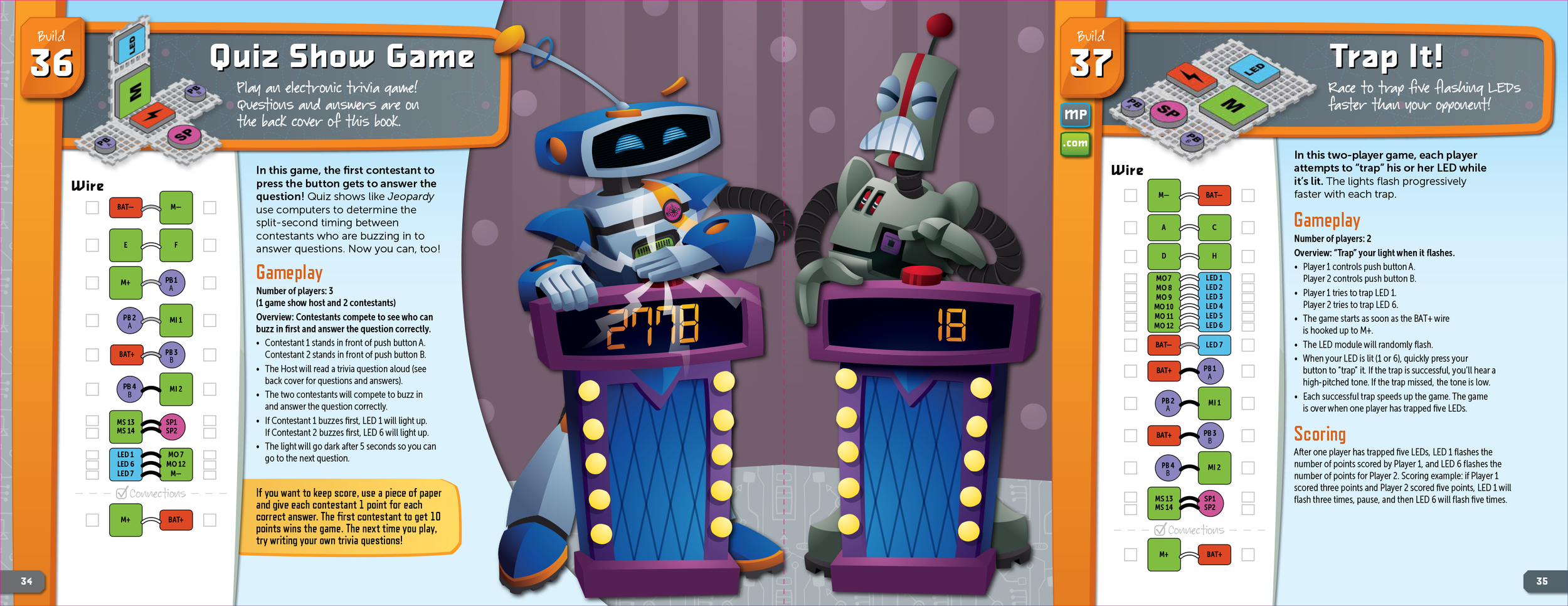
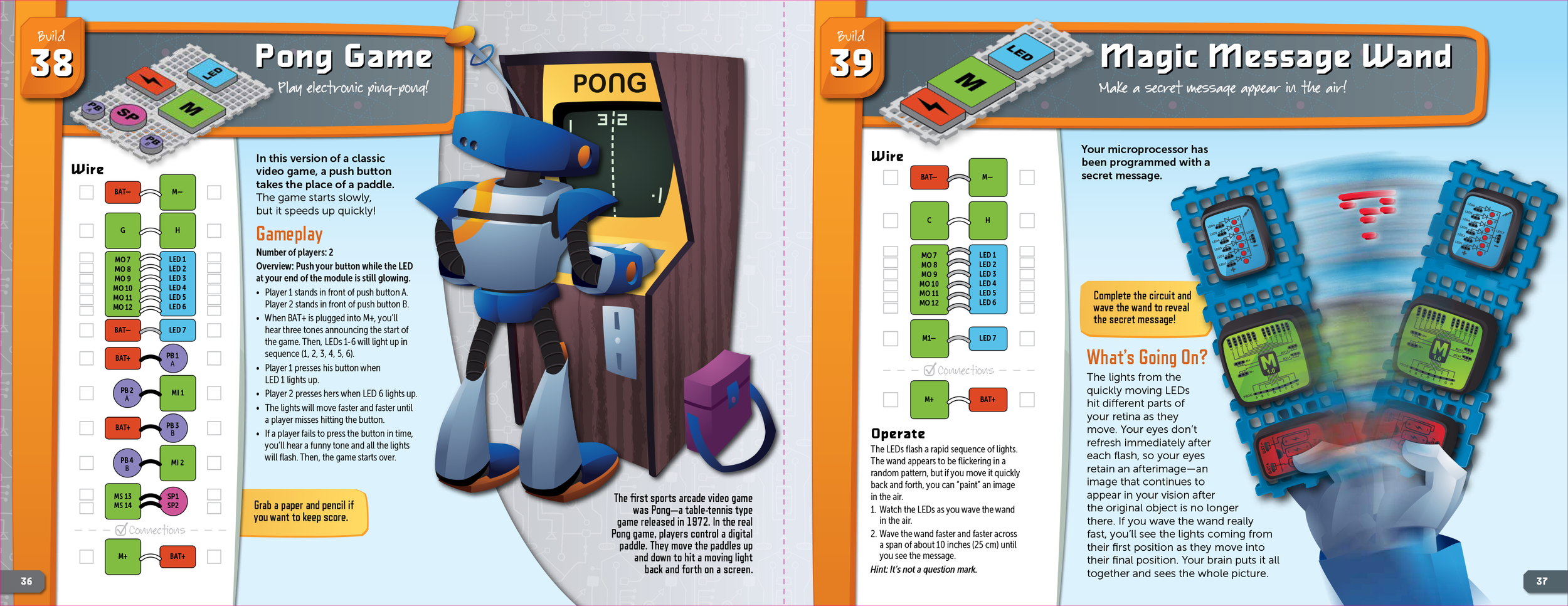
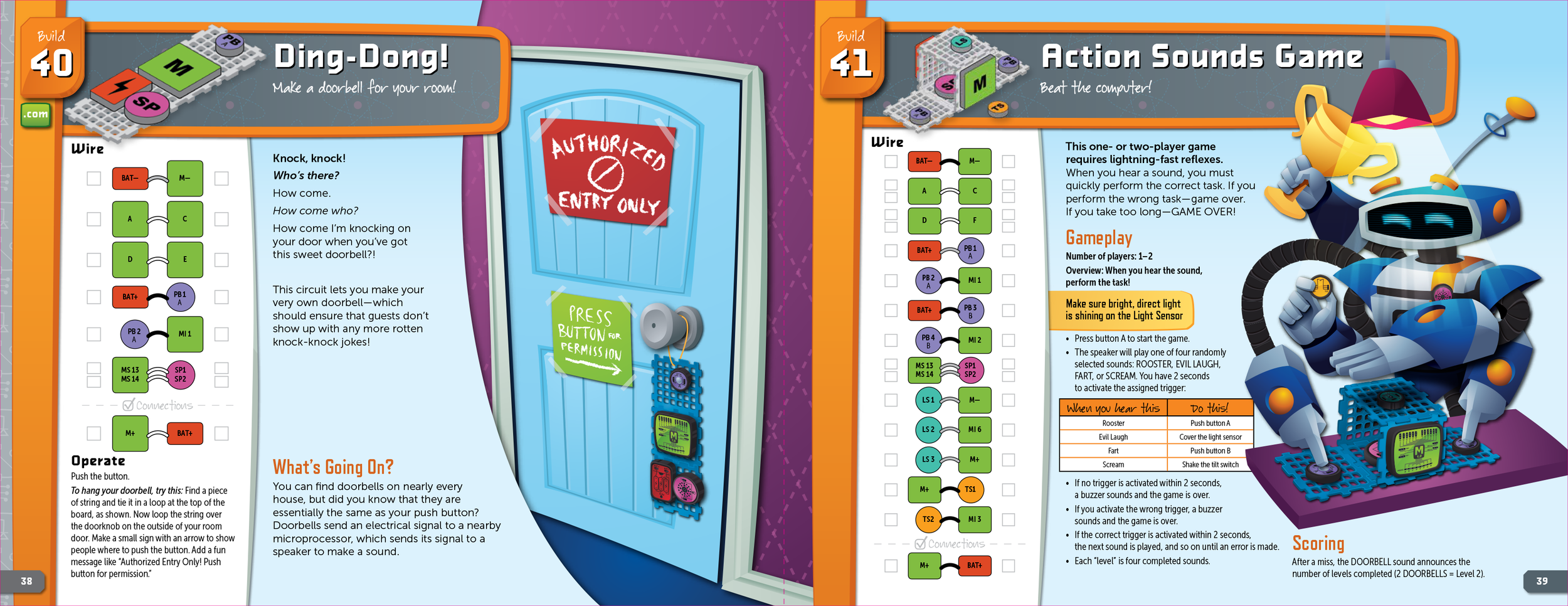
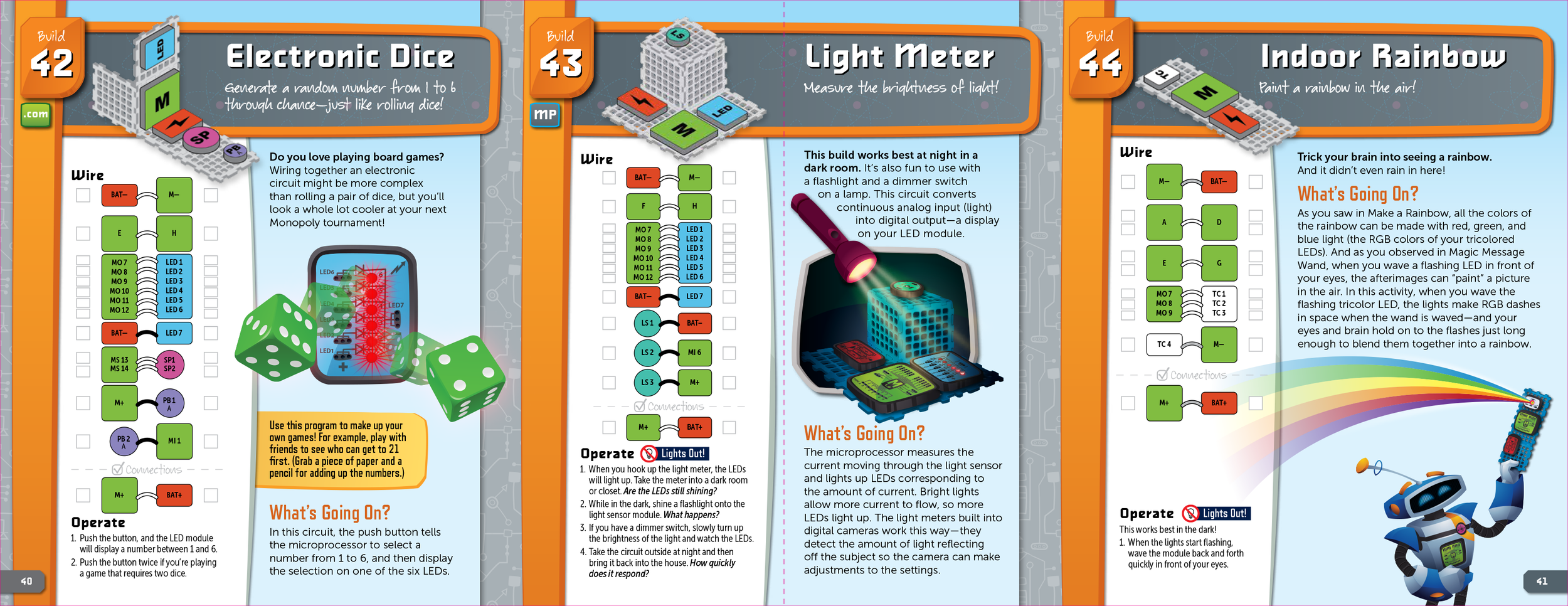
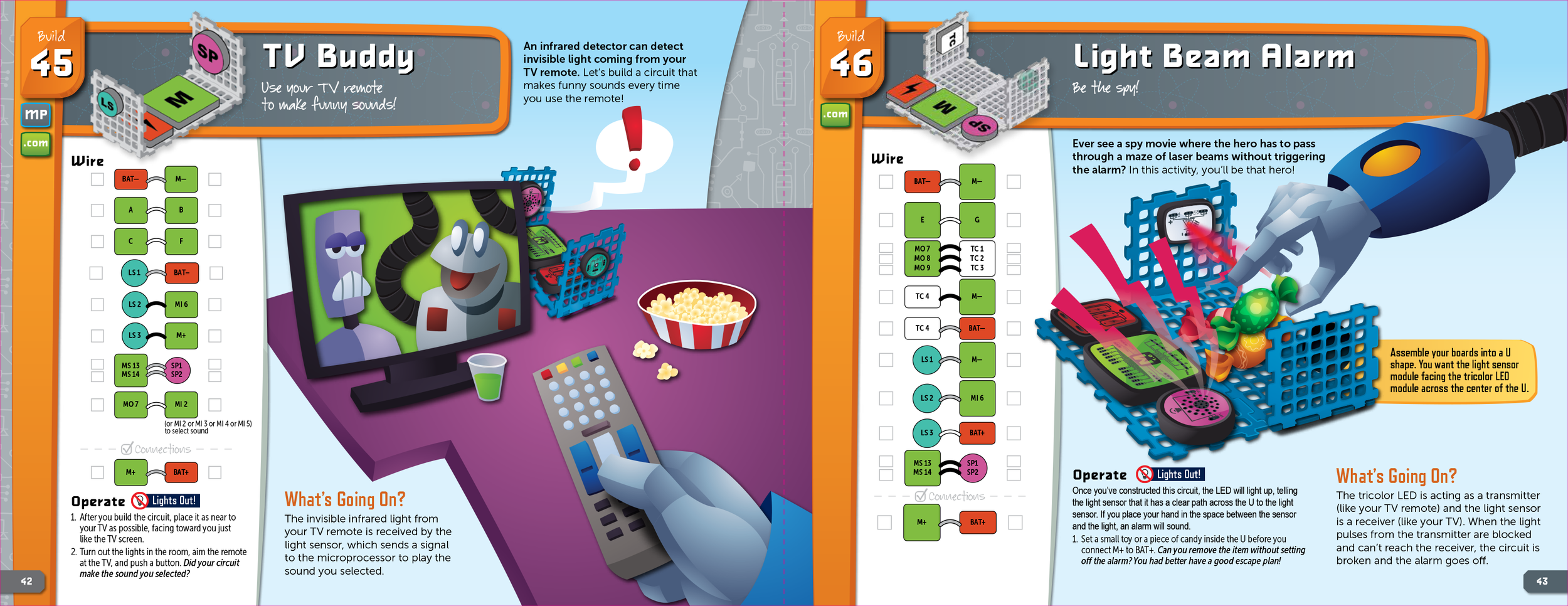
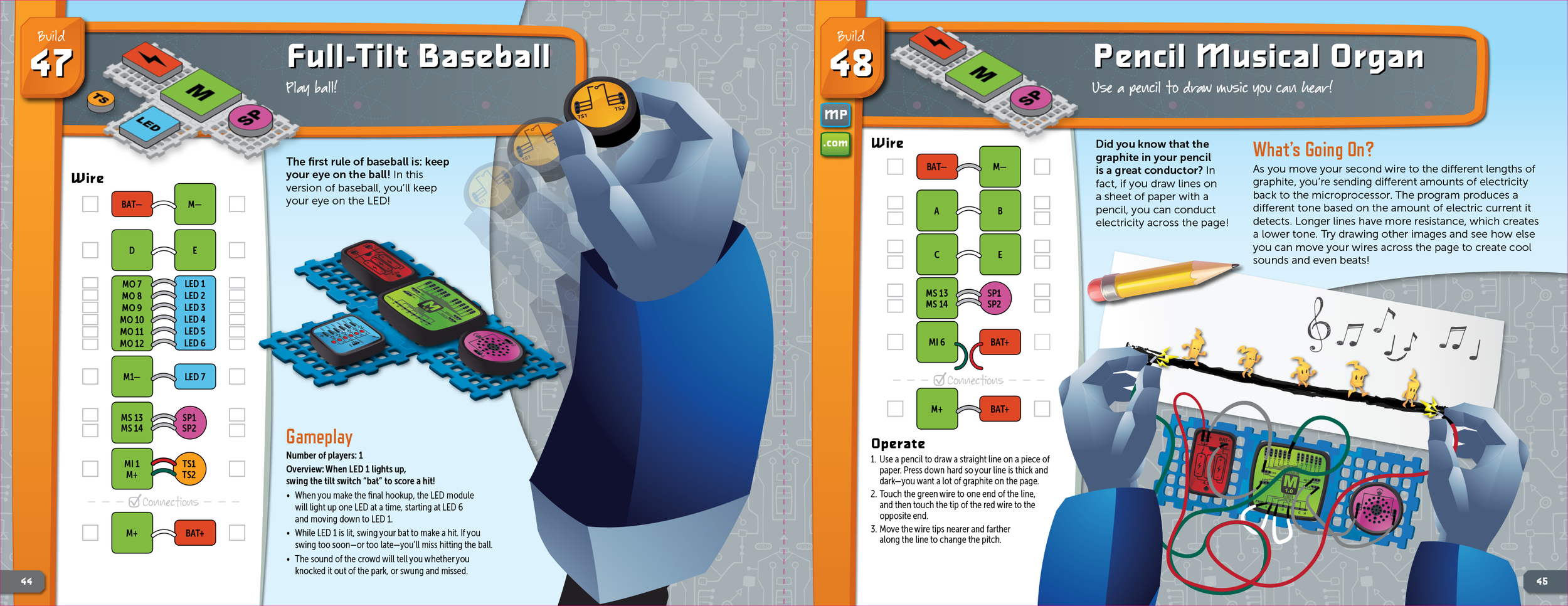
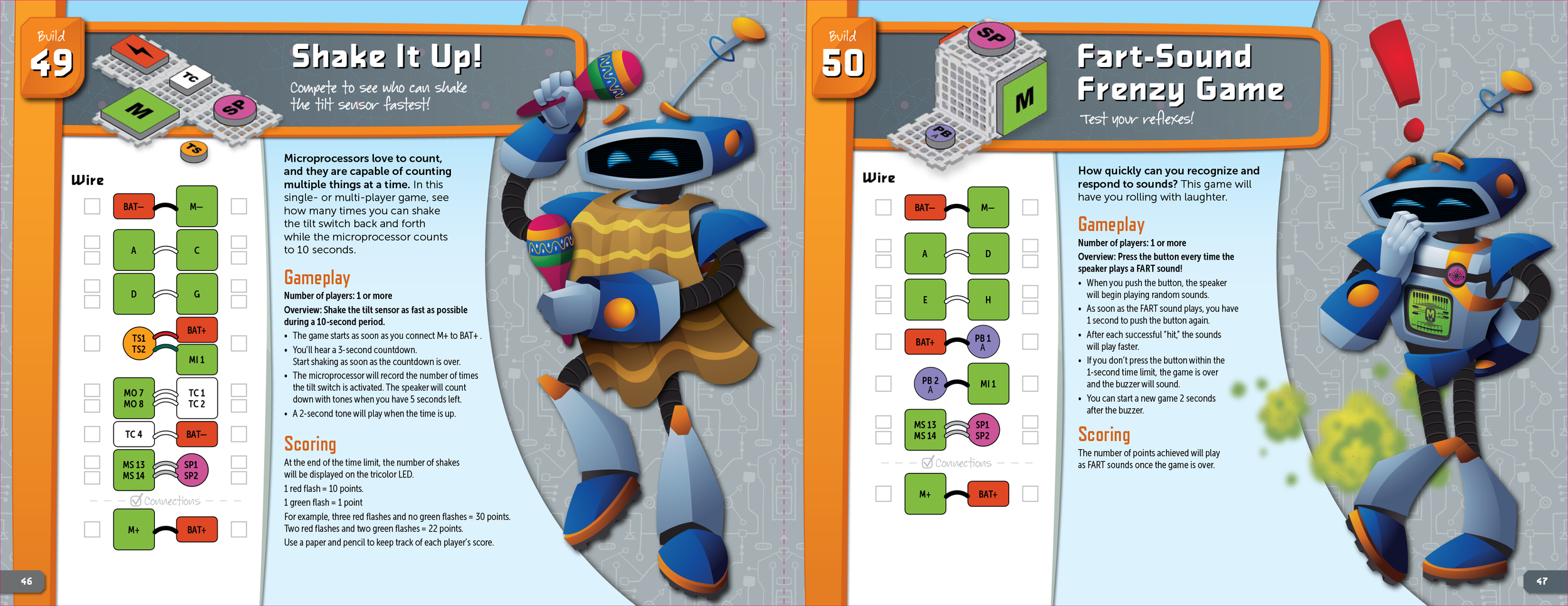
After months of playtesting the product with the booklet, we were finally able to conclude that the educational information provided was appropriate, introduced the product well, was age appropriate, and had flawless instructions.
Through our partnerships, we were featured on Amazon’s STEM Club. There, the product was provided to focused subscribers at a reduced cost. These users generally consist of home schoolers or teachers looking to supplement existing classroom equipment.
I am so proud to have been a part of this project. It was a huge undertaking that proved to be successful. Writing this has made me go back and find that many kiddos have found this an exciting product to learn from. And the fact that this product continues to have great reviews three years since it’s release makes me feel very happy!
A few Smart Circuit Fans!





